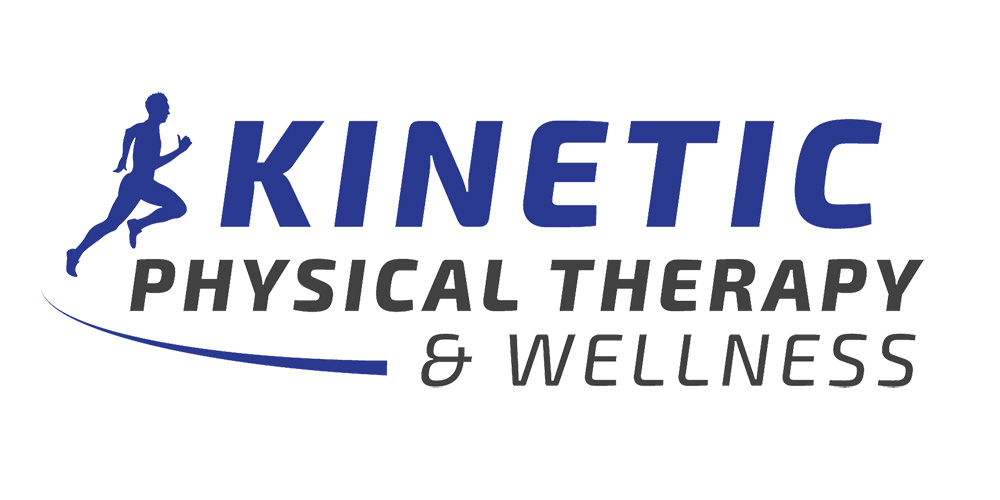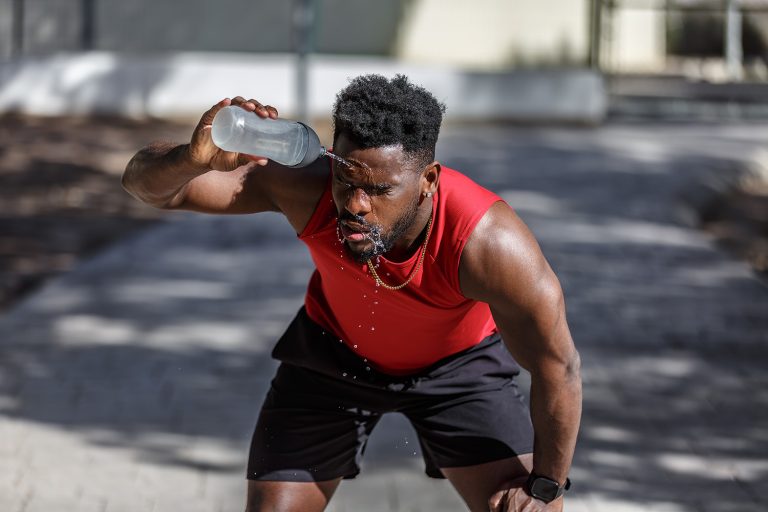

Strength vs. Endurance Training
When to Prioritize Each for Optimal Performance
For athletes and fitness enthusiasts alike, one of the most common questions is how to approach strength vs. endurance training for the best results. Both training styles offer unique benefits, but knowing when to emphasize one over the other can make a significant difference in achieving performance goals. Whether you are working to increase explosive power for sprints or build lasting stamina for long events, the decision often comes down to your sport, current fitness level, and competitive calendar. At Kinetic Physical Therapy and Wellness, we help athletes fine-tune their sports performance programs to strike the right balance between these two essential training approaches.
The Key Differences Between Strength vs. Endurance Training
Strength training focuses on building muscle force and power through resistance exercises such as weightlifting, bodyweight movements, and plyometrics. Endurance training, on the other hand, targets the body’s ability to sustain effort over time, often through cardiovascular activities like running, cycling, or swimming. Understanding the physiological differences is essential for deciding where to focus your time and effort. Strength vs. endurance training is not a matter of choosing one permanently—it’s about prioritizing based on what your current goals demand within your sports performance plan.
Benefits of Strength Training for Athletes
Strength training builds muscle mass, increases bone density, and improves joint stability, which helps prevent injuries. It also enhances force production, allowing athletes to jump higher, sprint faster, and change direction more effectively. For sports like football, basketball, or hockey, where explosive movements are critical, strength should be a primary focus during specific phases of the training year. In the context of strength vs. endurance training, strength work often lays the foundation for greater power output and efficiency in sport-specific movements within our sports performance programs.
Benefits of Endurance Training for Athletes
Endurance training improves cardiovascular capacity, muscular endurance, and the body’s ability to utilize oxygen efficiently. This type of training is vital for sports that require sustained effort, such as soccer, long-distance running, or cycling. It also helps with recovery between high-intensity efforts, making it valuable even for athletes in power-dominant sports. When deciding on strength vs. endurance training, athletes who need to perform for extended periods often benefit from prioritizing endurance work at certain points in their season. Our sports performance programs incorporate endurance cycles to support energy system development without sacrificing power.
When to Prioritize Strength vs. Endurance Training Based on Sport
Strength-Dominant Sports
Sports such as football, wrestling, and short-distance track events often require athletes to prioritize strength training during off-season and pre-season phases. Developing power early in the training cycle allows athletes to maintain it while incorporating sport-specific drills closer to competition.
Endurance-Dominant Sports
For endurance sports like marathons, triathlons, and long-distance swimming, athletes should focus heavily on building aerobic capacity, especially during the early preparation stages. Strength training is still important but often takes a secondary role to avoid interfering with endurance adaptations.
In our sports performance approach, we customize these priorities to match each athlete’s competition schedule and physical needs.
Strength vs. Endurance Training Within a Periodized Program
A well-structured periodization plan allows athletes to switch emphasis between strength vs. endurance training throughout the year. This method ensures that all aspects of performance are developed while reducing the risk of overtraining. For example, an athlete may focus on building strength in the off-season, shift to more endurance work during mid-season, and maintain both during competition periods. Our sports performance plans follow this model to keep athletes progressing without burnout.
How to Combine Strength and Endurance Effectively
The key to balancing strength vs. endurance training is scheduling them in a way that minimizes interference. Doing heavy strength training right before an intense endurance workout can compromise performance in both areas. Instead, athletes should separate these sessions by several hours or perform them on alternate days. High-intensity intervals can serve as a bridge, providing both strength and endurance benefits when programmed correctly. In our sports performance programs, we carefully design training schedules to maximize adaptation in both areas.
Avoiding Common Mistakes in Strength vs. Endurance Training
One common mistake athletes make is neglecting one type of training altogether. A pure strength athlete who ignores endurance work may struggle with recovery during games, while an endurance athlete who avoids strength work risks reduced power output and increased injury risk. Another mistake is failing to adjust priorities based on the season, leading to plateaued progress. Addressing these strength vs. endurance training mistakes early ensures a more well-rounded, competitive athlete.
Recovery and Adaptation Considerations
Recovery plays a critical role in strength vs. endurance training success. Strength work causes muscle microtears that require adequate protein and rest for repair, while endurance work taxes the cardiovascular system and depletes energy stores. Balancing rest days, active recovery, and nutrition ensures both adaptations can occur without interference. Our sports performance training includes individualized recovery strategies to help athletes perform consistently at their best.
Choosing the Right Focus for Your Goals
Ultimately, deciding when to prioritize strength vs. endurance training depends on your sport, goals, and competition timeline. Athletes should work with knowledgeable coaches to assess their strengths, weaknesses, and seasonal demands. By aligning training priorities with performance objectives, you can maximize results and minimize the risk of overtraining or injury. At Kinetic Physical Therapy and Wellness, we specialize in designing sports performance programs that strike the perfect balance between strength and endurance for peak competitive success.
Final Thoughts on Strength vs. Endurance Training
Both strength and endurance are essential components of athletic performance, but their importance shifts depending on the athlete’s sport and season. By understanding the differences and knowing when to focus on one over the other, athletes can develop a training plan that supports their competitive goals. Our team at Kinetic Physical Therapy and Wellness can help you create a customized sports performance program that integrates strength vs. endurance training in a way that maximizes performance while keeping you healthy and ready for competition.
Ready to elevate your athletic performance? Unlock your full potential with the Sports Performance Program at Kinetic Physical Therapy and Wellness in Greenville, NC! Our expert trainers provide personalized, science-backed training designed to enhance your strength, speed, and agility. Whether you’re a seasoned athlete or just starting out, our program is tailored to help you achieve your specific goals and excel in your sport. Don’t just play—perform at your best! Sign up for our Sports Performance Program today and take your game to the next level!
Please Share
categories
Recent Posts

Strength vs. Endurance Training
When to Prioritize Each for Optimal Performance
For athletes and fitness enthusiasts alike, one of the most common questions is how to approach strength vs. endurance training for the best results. Both training styles offer unique benefits, but knowing when to emphasize one over the other can make a significant difference in achieving performance goals. Whether you are working to increase explosive power for sprints or build lasting stamina for long events, the decision often comes down to your sport, current fitness level, and competitive calendar. At Kinetic Physical Therapy and Wellness, we help athletes fine-tune their sports performance programs to strike the right balance between these two essential training approaches.
The Key Differences Between Strength vs. Endurance Training
Strength training focuses on building muscle force and power through resistance exercises such as weightlifting, bodyweight movements, and plyometrics. Endurance training, on the other hand, targets the body’s ability to sustain effort over time, often through cardiovascular activities like running, cycling, or swimming. Understanding the physiological differences is essential for deciding where to focus your time and effort. Strength vs. endurance training is not a matter of choosing one permanently—it’s about prioritizing based on what your current goals demand within your sports performance plan.
Benefits of Strength Training for Athletes
Strength training builds muscle mass, increases bone density, and improves joint stability, which helps prevent injuries. It also enhances force production, allowing athletes to jump higher, sprint faster, and change direction more effectively. For sports like football, basketball, or hockey, where explosive movements are critical, strength should be a primary focus during specific phases of the training year. In the context of strength vs. endurance training, strength work often lays the foundation for greater power output and efficiency in sport-specific movements within our sports performance programs.
Benefits of Endurance Training for Athletes
Endurance training improves cardiovascular capacity, muscular endurance, and the body’s ability to utilize oxygen efficiently. This type of training is vital for sports that require sustained effort, such as soccer, long-distance running, or cycling. It also helps with recovery between high-intensity efforts, making it valuable even for athletes in power-dominant sports. When deciding on strength vs. endurance training, athletes who need to perform for extended periods often benefit from prioritizing endurance work at certain points in their season. Our sports performance programs incorporate endurance cycles to support energy system development without sacrificing power.
When to Prioritize Strength vs. Endurance Training Based on Sport
Strength-Dominant Sports
Sports such as football, wrestling, and short-distance track events often require athletes to prioritize strength training during off-season and pre-season phases. Developing power early in the training cycle allows athletes to maintain it while incorporating sport-specific drills closer to competition.
Endurance-Dominant Sports
For endurance sports like marathons, triathlons, and long-distance swimming, athletes should focus heavily on building aerobic capacity, especially during the early preparation stages. Strength training is still important but often takes a secondary role to avoid interfering with endurance adaptations.
In our sports performance approach, we customize these priorities to match each athlete’s competition schedule and physical needs.
Strength vs. Endurance Training Within a Periodized Program
A well-structured periodization plan allows athletes to switch emphasis between strength vs. endurance training throughout the year. This method ensures that all aspects of performance are developed while reducing the risk of overtraining. For example, an athlete may focus on building strength in the off-season, shift to more endurance work during mid-season, and maintain both during competition periods. Our sports performance plans follow this model to keep athletes progressing without burnout.
How to Combine Strength and Endurance Effectively
The key to balancing strength vs. endurance training is scheduling them in a way that minimizes interference. Doing heavy strength training right before an intense endurance workout can compromise performance in both areas. Instead, athletes should separate these sessions by several hours or perform them on alternate days. High-intensity intervals can serve as a bridge, providing both strength and endurance benefits when programmed correctly. In our sports performance programs, we carefully design training schedules to maximize adaptation in both areas.
Avoiding Common Mistakes in Strength vs. Endurance Training
One common mistake athletes make is neglecting one type of training altogether. A pure strength athlete who ignores endurance work may struggle with recovery during games, while an endurance athlete who avoids strength work risks reduced power output and increased injury risk. Another mistake is failing to adjust priorities based on the season, leading to plateaued progress. Addressing these strength vs. endurance training mistakes early ensures a more well-rounded, competitive athlete.
Recovery and Adaptation Considerations
Recovery plays a critical role in strength vs. endurance training success. Strength work causes muscle microtears that require adequate protein and rest for repair, while endurance work taxes the cardiovascular system and depletes energy stores. Balancing rest days, active recovery, and nutrition ensures both adaptations can occur without interference. Our sports performance training includes individualized recovery strategies to help athletes perform consistently at their best.
Choosing the Right Focus for Your Goals
Ultimately, deciding when to prioritize strength vs. endurance training depends on your sport, goals, and competition timeline. Athletes should work with knowledgeable coaches to assess their strengths, weaknesses, and seasonal demands. By aligning training priorities with performance objectives, you can maximize results and minimize the risk of overtraining or injury. At Kinetic Physical Therapy and Wellness, we specialize in designing sports performance programs that strike the perfect balance between strength and endurance for peak competitive success.
Final Thoughts on Strength vs. Endurance Training
Both strength and endurance are essential components of athletic performance, but their importance shifts depending on the athlete’s sport and season. By understanding the differences and knowing when to focus on one over the other, athletes can develop a training plan that supports their competitive goals. Our team at Kinetic Physical Therapy and Wellness can help you create a customized sports performance program that integrates strength vs. endurance training in a way that maximizes performance while keeping you healthy and ready for competition.
Ready to elevate your athletic performance? Unlock your full potential with the Sports Performance Program at Kinetic Physical Therapy and Wellness in Greenville, NC! Our expert trainers provide personalized, science-backed training designed to enhance your strength, speed, and agility. Whether you’re a seasoned athlete or just starting out, our program is tailored to help you achieve your specific goals and excel in your sport. Don’t just play—perform at your best! Sign up for our Sports Performance Program today and take your game to the next level!
Please Share
You May Also Like







